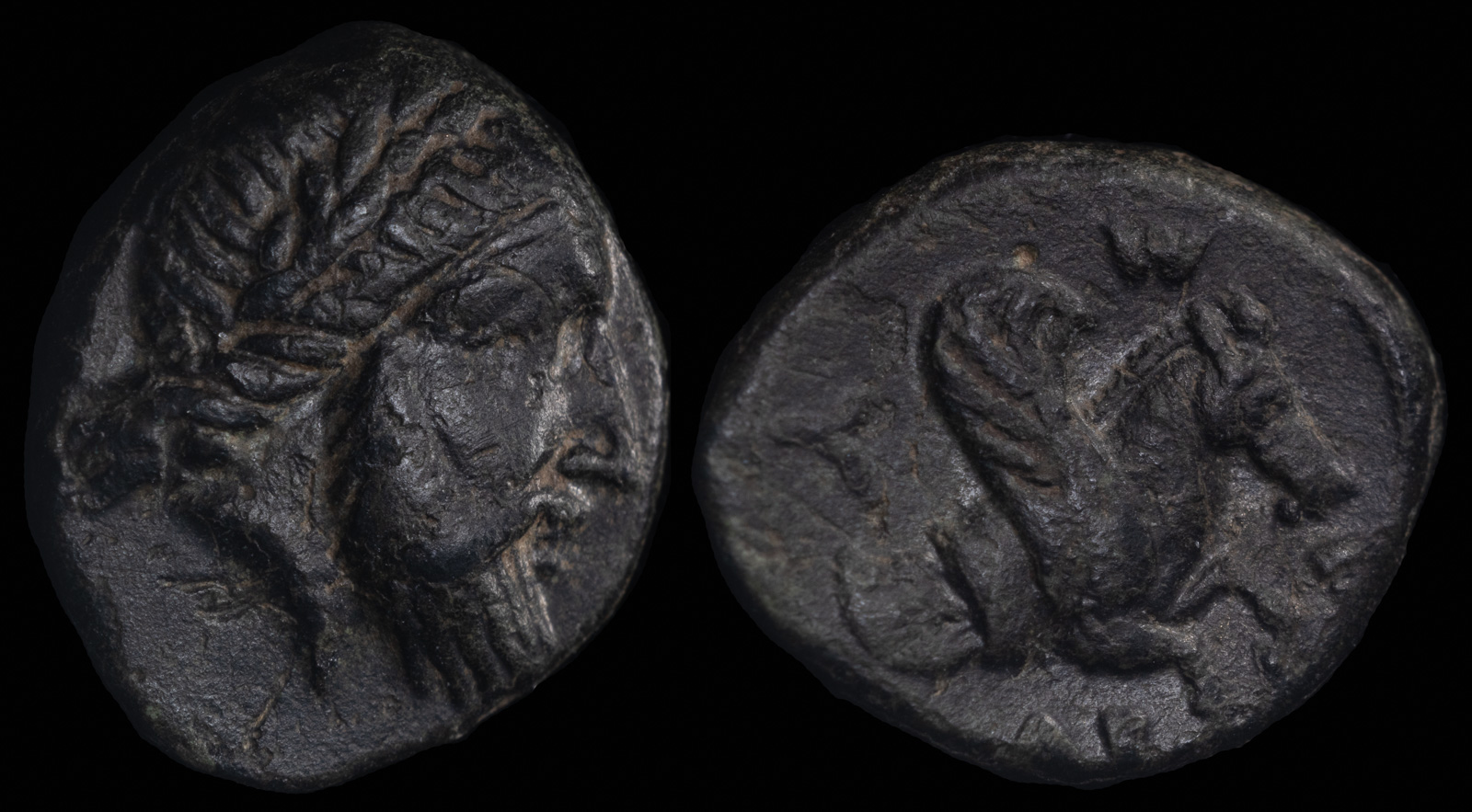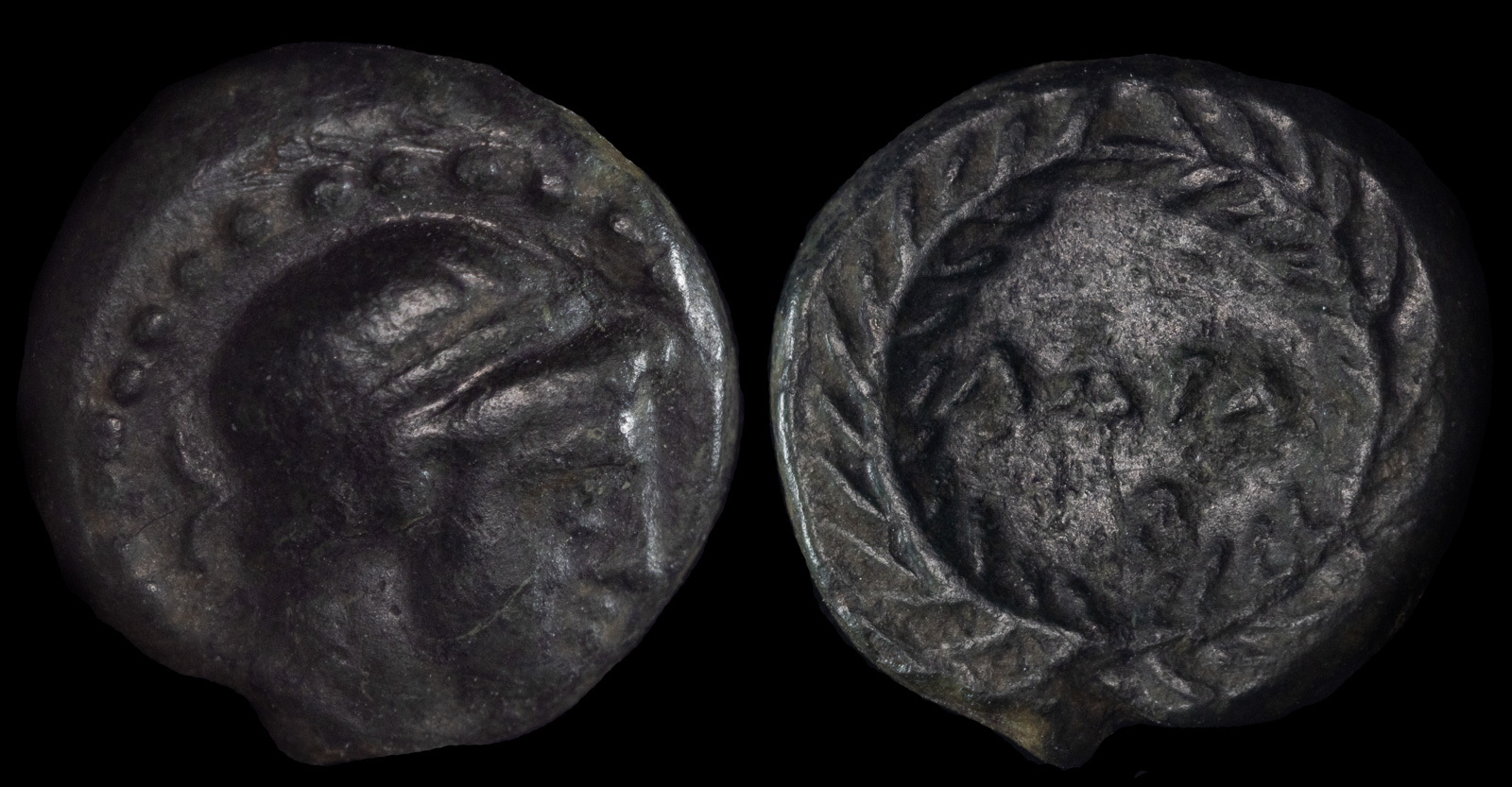
Mysia. Adramytteion
ca. 350 BCE
AE 11mm 2,04g
Laureate, three-quarter facing head of Zeus, slightly right /
ΑΔΡΑ; eagle standing left on pediment.
Von Fritze 4, pl. i, 6
Adramyteion has a long and turbulent history. Supposedly its name came from the son of King Kroisos of Lydia, who administered the city at one point. When Lydia was conquered by the Persians, Adramyteion went along with it. The city was visited by Xenophon’s 10,000 during their travels down the coast.
For most of the period from its founding until it’s occupation by Alexander the Great, Adramyteion bounced between Mytilene and the Persian Empire. After Alexander’s invasion, it was seized by Antigonos Monophthalmos in 319 BCE, then fell again to Lysimachos in 302 BCE.
That’s when this coin was minted. From the time 290 to roughly 283 BCE, the city was renamed Agathokleia in honor of Lysimachos’ son. When Agathokles was executed after Lysimachos suspected a plot against him (though most believe that was a ploy by his then-wife Arsinoe II and Ptolemy Keraunos to install her own son as heir), the city was presumably renamed back.
However, the city didn’t long remain in the possession of Lysimachos, as he was defeated in 281 BCE, largely due to public unhappiness at the execution of Agathokles, and the city fell into possession of Seleukos Nikator.
I’m honestly unsure of the meaning of the weird double-bodied owl. While normally owls represent Athenian power, Adramyteion was never really in Athens’ dominion, nor was Athens even a major player at this point. Owls were symbols of wisdom back then, so perhaps the goal was to portray that without suggesting a connection with Athens.
This coin is more typical of Adramyteion and was issued earlier.

Adramytion, Mysia
360 – 340 BCE
Ae 12mm, 1.7gms
Obv: Laureate head of Zeus right
Rev: Forepart of Pegasos right; ADPAMY around
Klein 246

Mysia, Adramyttion
3rd century BCE
Æ 10 mm, 1,19 g
Obv: Bust of Apollo within dotted border, bow to left
Rev: ΑΔΡΑ within laurel wreath. Monogram(?) below
Unpublished
The satrap of Phrygia, Pharnakes, offers asylum in Adramytteion to exiles from Delos.
The 10,000, as described in Xenophon’s Anabasis, travel through Antandros and Adramytteion.
Peace of Antalkidas, arranged by Artaxerxes II, is signed in Susa, ending the Corinthian War. Abydos, Aigai, Kalchedon, Kaunos, Klazomenai, Kyzikos, Parion, Samos, and Adramytteion become part of the Persian Empire.
Autophradates besieged Ariobarzanes, who was participating in the Great Satraps Revolt, in Adramytteion.
Adramytteion abandoned with arrival of the Spartan king, Agesilaos II.
May
The Battle of the Granicus, during which Alexander the Great defeated the Persians under Darius III, and after which Adramytteion and Kaunos come under his control. Kalas participates with the Thessalian cavalry under Parmenion. Perdikkas serves on the right.
June 30
Partition of Babylon. Abydos and Adramytteion come under control of Leonnatos. Egypt with Alexandria and Gaza are under Ptolemy. Baktria comes under Seleukos I Nikator. Asandros obtains Caria. Laomedon receives Koele-Syria.
Adramytteion seized by Antigonos I Monophthalmos.
Adramytteion and Ephesos are taken by Prepalaos, a general under Lysimachos.
Lysimachos defeated at the Battle of Coropedion. Adramytteion, Ainos, and Abydos come under control of the Seleukid Empire. Ephesos returns to its original name.
Countryside around Adramytteion pillaged by Philip V of Macedon.
126 BCE
Manius Aquillius is governor of Asia and rebuilds the road from Adramytteion to Smyrna.
Per Acts 27:2, Adramytteion is the location where the Apostle Paul is transported as a prisoner.
Adramytteion severely damaged during an earthquake. Trajan provides funds to rebuild it.